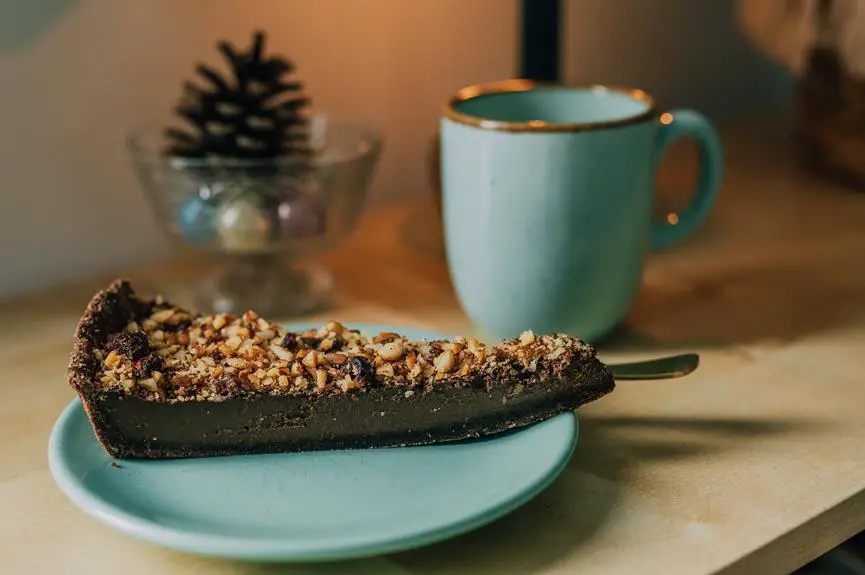Chocolate, a delectable treat enjoyed by millions around the world, has a rich and fascinating history that spans centuries. But have you ever stopped to wonder where this indulgent delight comes from?
Beyond the shelves of candy stores and confectionery aisles, lies a complex process that begins with the humble cacao tree. In this discussion, we will unravel the origins of chocolate, exploring the journey from cacao beans to the tantalizing bars we know and love.
Prepare to be captivated by the secrets that lie within the depths of the cacao tree and discover the magic that transforms these beans into the sweet sensation we call chocolate.
The Cacao Tree: A Source of Chocolate
The cacao tree, also known as Theobroma cacao, is the primary source of chocolate, a beloved treat enjoyed by people around the world. This tropical evergreen tree is native to the Americas and is primarily cultivated in regions such as West Africa, South America, and Southeast Asia.
The cacao tree produces large, football-shaped pods that contain cacao beans. These beans are the key ingredient used to make chocolate. The process begins by harvesting the pods and extracting the beans, which are then fermented and dried.
Afterward, the beans are roasted, ground, and transformed into a paste known as cocoa liquor. From here, various techniques are employed to separate the cocoa solids from the cocoa butter, resulting in different types of chocolate products such as dark chocolate, milk chocolate, and white chocolate.
Harvesting and Processing Cacao Beans
Harvesting and processing cacao beans is a meticulous and labor-intensive task that involves several steps to ensure the quality and flavor of the final chocolate product.
- Harvesting: Cacao pods are carefully harvested by hand when they reach maturity. This requires skilled workers who can identify the ripe pods by their color and texture.
- Fermentation: The harvested pods are opened, and the beans and pulp are removed. The beans are then placed in fermenting containers and left to ferment for several days. This process is crucial in developing the chocolate flavor.
- Drying: After fermentation, the beans are spread out to dry in the sun or using artificial methods. Proper drying ensures the removal of excess moisture and prevents the growth of mold.
- Roasting: Once dried, the beans are roasted to enhance their flavor. This step brings out the rich aroma and deepens the chocolatey taste.
From Bean to Bar: The Chocolate Making Process
After the meticulous harvesting and processing of cacao beans, the next step in the chocolate production journey involves transforming these beans into the delectable chocolate bars that we all love.
This process, known as chocolate making, is a carefully controlled and multi-step procedure.
First, the cacao beans are roasted to bring out their flavors and reduce their moisture content. Then, the roasted beans are cracked and winnowed to remove the outer shell, leaving behind the cocoa nibs.
These nibs are then ground into a paste called cocoa liquor. From here, the cocoa liquor is further processed to separate the cocoa solids from the cocoa butter.
Chocolate Varieties: Exploring Different Origins
Chocolate varieties from different origins offer a delightful array of flavors and nuances, captivating the taste buds of chocolate enthusiasts worldwide. Each origin brings its unique characteristics, influenced by factors such as climate, soil, and processing techniques.
Here are four popular chocolate varieties from different origins:
- Swiss Chocolate: Known for its smooth texture and creamy taste, Swiss chocolate is made with high-quality cocoa beans and meticulous craftsmanship. It is often associated with luxury and is famous for its milk chocolate creations.
- Belgian Chocolate: Renowned for its rich and intense flavor, Belgian chocolate is made using traditional methods and premium ingredients. It is characterized by its velvety texture and diverse range of flavors, including dark, milk, and white chocolate.
- Venezuelan Chocolate: Hailed as some of the finest in the world, Venezuelan chocolate boasts complex flavors, including fruity and nutty notes. It is often made with criollo cocoa beans, which are highly prized for their exceptional quality.
- Ecuadorian Chocolate: Known for its floral and earthy flavors, Ecuadorian chocolate is made from a variety of cocoa beans, including the highly sought-after Nacional beans. It is cherished for its unique taste profile and commitment to sustainable farming practices.
These chocolate varieties offer a delightful exploration of flavors and origins, allowing chocolate lovers to embark on a sensory journey through the diverse world of chocolate.
Sustainable Chocolate: The Future of Cacao Farming
The future of cacao farming lies in the hands of sustainable practices, ensuring the longevity and quality of chocolate production.
As demand for chocolate continues to rise, it is crucial to address the environmental and social impacts of cacao cultivation. Sustainable chocolate involves implementing practices that minimize the use of harmful chemicals, protect biodiversity, and support the livelihoods of cacao farmers.
This includes adopting organic farming methods, such as agroforestry, which promotes the cultivation of cacao trees alongside other shade-loving plants, creating a more balanced ecosystem. Additionally, fair trade initiatives play a vital role in ensuring fair wages and safe working conditions for farmers.

